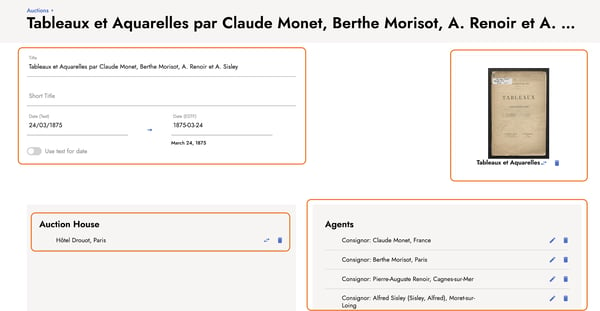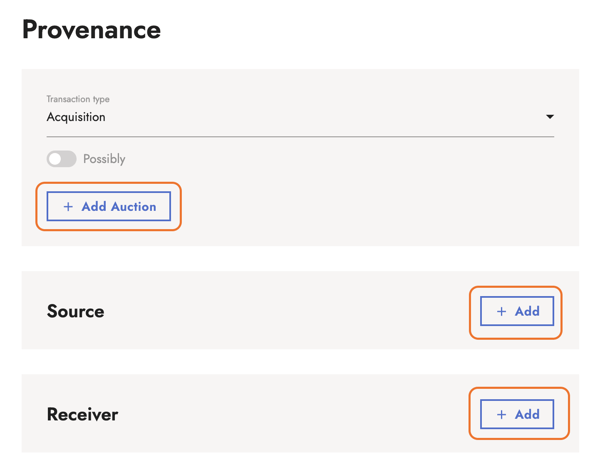The key to digital archiving and cataloguing is organizing related information in a clear, structured and efficient way. The event-based system of Navigating.art allows you to easily manage this challenge — here's why.
Art events are core to the Navigating.art platform. Understanding this concept allows you to use the platform efficiently. Here's what we will take a look at in this article:
What are events?
The Navigating.art platform is structured as follows: You create different kinds of entities, such as artworks, exhibitions, agents, publications and so on. Within these entries, all the relevant information related to those entity types are being captured. These entities then stand in a relationship to one another. At this point the art events come into play. They describe the exact point of contact of the entities and links them in a meaningful way. Like this, the relevant details, already captured within the created entities, will be autogenerated within the art event together and don't have to be entered manually again and again. Nonetheless, the art event lets you capture additional contextual information unique to specific art events.
A publication event is a perfect example showing how bibliographical elements and artwork referenced come together in the art event.
Example 1: publication event

This diagram shows you an example of a publication event. As mentioned, you create different, independent entries including their specific information. In this case an artwork (green) and a publication (blue). The art event (light blue) connects them and provides a place where you can capture details about their relationship (grey) like an alternate title of the artwork, the page numbers referencing the work or showing reproductions of it. Such details that are not captured in any of the independent entries themselves can be captured in the art event and are thus connected only to the art event itself (light blue), not to any of the individual entries. This is what event based data entry means: every piece of information relating to an artwork is captured in a specific context through an art event.
The following example shows how to use specific types of art events and how they work with other art events.
Example 2: provenance art event
Let's say your artwork was sold at an auction. There are several pieces of information that need to be captured in such an event: Which auction was it? Who bought the artwork? Who was the previous owner? All of this information can be added through an art event. However, it is important to create distinct entities for the different parties first.
In this case, the first step would be to create an auction entry for the auction the painting was sold at. Within this auction entry you capture all the data related to that auction, like the date it took place and the auction house that organized it.

Create agents for various owners within the agents tab. If needed you can create address information for the owner

Finally, you add the provenance event to your artwork. Choose acquisition.

You can now link the auction entry to this provenance event. Link the agent entries to the corresponding role (source or receiver).

It is still possible to capture additional event information — data that is related specifically to this event, e.g. that the artwork was sold under another title in the auction. The provenance event becomes the juncture of all entities involved and links the information to your artwork in a structured way.
Related articles
Do you still need help with art events?
Our Support Team is happy to help! Reach out via our Contact Form to get in touch.
Last Updated: Feb 8, 2023
